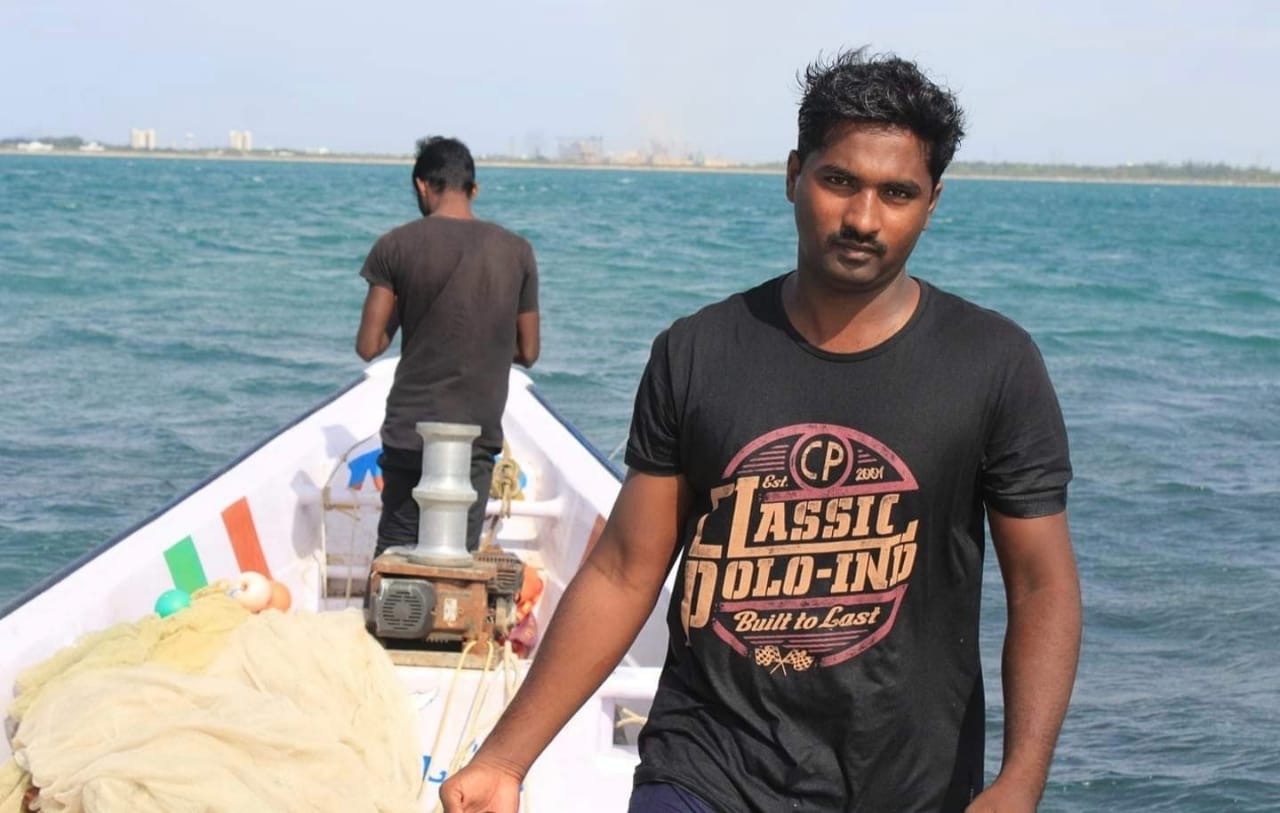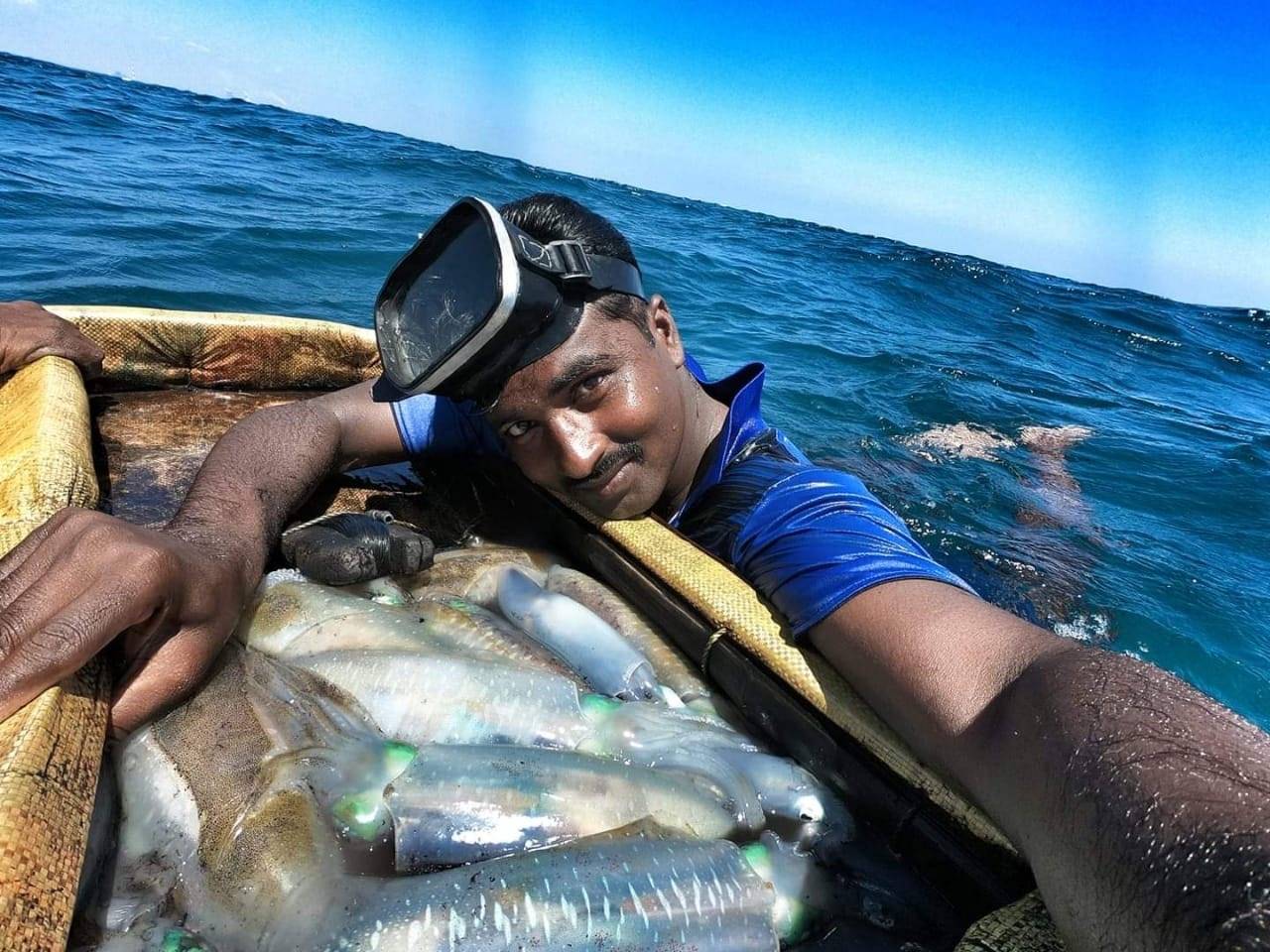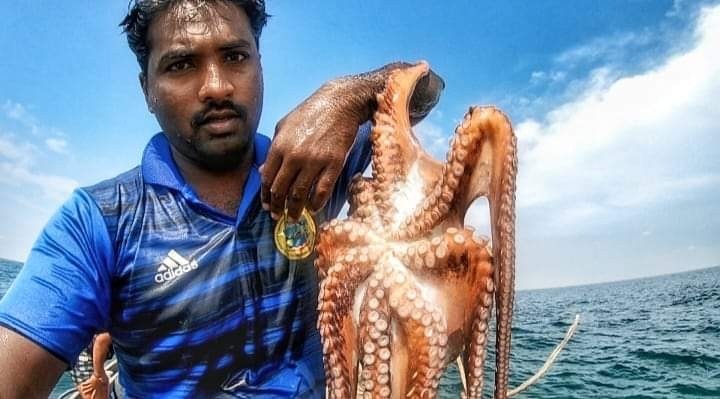Catching fish using the precision of arrows, walking on sea beds with aluminium plates as shoes, and diving 150 ft underwater with no oxygen cylinders – these are just some of the traditional fishing techniques that fisherfolk of Tamil Nadu’s Thoothukudi, the Pearl City of India, follow.
“I have been venturing into the deep sea with my father for the last 25 years, since I was a child. He would take me on his boat late in the evening and we would spend up to 6 hours in the water catching fish. We would return before sunrise, put our catch into baskets and send it in lorries to be sold,” recalls Shakthi Vel, a 29-year-old fisherman from the area. He adds that traditional fishing practices have seen a tremendous change over the decades, and so has their livelihood.
To bring awareness about his fisherfolk community, the hard work they do, and the problems they face every day, Shakthi has started a YouTube channel named Thoothukudi Meenavan. He uploaded his first video four years ago, and today he has produced over 300 videos and gained 4 lakhs subscribers.

In an interview with The Better India, Shakthi shares what the videos are about, and the impact they have created for the people in his community.
Changing lifestyles
Born and raised in a family of fishermen, Shakthi is a graduate in BE Economics from Kamaraj College in Thoothukudi. As a child he grew up listening to stories from his father, Malai Swamy (65), about his grandfather and great-grandfather, who were pearl divers.
His forefathers were the only ones who did pearl fishing, would dive hundreds of feet under water to reach the seabed. But they would not wear any safety gear or oxygen tanks to help them breathe or swim underwater. Their skills earned the district the name, Pearl City of India.
They were able to do so because they were trained from a very young age to hold their breath underwater.
Malai Swamy says, “As a young boy, I have seen my father pick up oysters from the sea bed and extract pearls. It was considered an art form then. However, once people started using the sea as a dustbin, these creatures slowly disappeared, and eventually, we were banned from collecting it.”
Pearl fishing was banned in the late 1960s owing to exploitation and depletion of the resource. Now, even if a fisherman sees an oyster that might have a pearl in them, they do not disturb the species and allow it to thrive underwater.
To earn a livelihood, fishermen now pick up conch shells or shankhs which are found on the sea bed. These shells range in size, shape, and colour and can cost anywhere between Rs 10 or Rs 1,500.
Another practice native to this region is fishing using arrows. This is done to catch species including octopuses, and Kanava meen or Cuttlefish, that swim in deep waters.

Earlier, the fishermen would spend at least an hour or two walking on the sea bed, catching the fish without eye goggles or air supply. Now, the fishing community tie aluminium plates to their feet to push down on sand on the bed and walk faster, and some can afford eye goggles to see better.
While most of them still prefer to swim without oxygen cylinders, others take air supply from tanks which are used to fill air in tyres.
“These are placed in the boat above, and long pipes are used to supply air to the fisherman at the seabed. But this is an unsafe practice as the air supply is not pure oxygen but has a high content of nitrogen too. Fishermen using this train themselves to blow out the air immediately to avoid poisoning. Since this technique caught on, there have been more deaths in the community,” Shakthi notes.
Encapsulating an age-old tradition
Usually, these ever-changing trends, the good and the bad, are undocumented and only passed on to future generations through oral stories. So Shakthi took up the task of recording his everyday routine and giving a peek into his community.
“I wish I could see the way my grandfather went fishing. But, there are no records of that, not even a picture. So I want my children to remember the practices we are following today. One day what we are doing now may sound impossible to the world, at that time, these vlogs will remain as evidence,” says Shakthi.
The first video was recorded with a smartphone, and the underwater shots were recorded by wrapping the phone with a transparent plastic cover. The video was about how the fishermen travel in boats into the depths of the sea and catch fish using nets.
“The vlog was uploaded to my YouTube channel and received thousands of views. But many gave me feedback saying the quality of the video should be better if I wanted to get more views. I was discouraged by this as I did not have money to purchase a camera or a better phone,” says Shakthi.

A childhood friend of Shakthi named Sujin Babu, who works in the USA, sent his friend a phone that has good camera quality and a GoPro 6 which he could use to record underwater.
“I owe most of my success to my friends and family. Some have helped me with the equipment and editing, while others keep motivating me to shoot more videos,” says Shakthi.
Recently, Shakthi shared videos about an elderly couple in his community who were struggling to make ends meet with no source of income. He explained the work they did earlier and even showed viewers the insides of the couple’s damaged house, asking people to help them.
“As many Sri Lankan Tamilians live abroad, some are regular viewers who donated over Rs 50,000. These funds were used to renovate their shack, install solar-powered lights and fans, and buy essential medicines and groceries,” says Shakthi.

Till today, he has uploaded over 300 videos and gained over 4 lakh followers. His videos have earned him up to Rs 25,000/ month which he used to purchase medicines, groceries, clothes, and carry out repairs to the homes or boats for the people in his community.
You can support Shakthi by subscribing to his YouTube channel or by following him on social media.
No comments:
Post a Comment